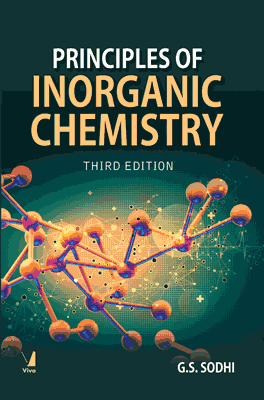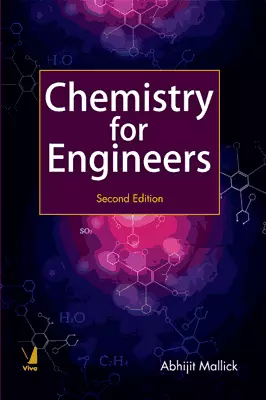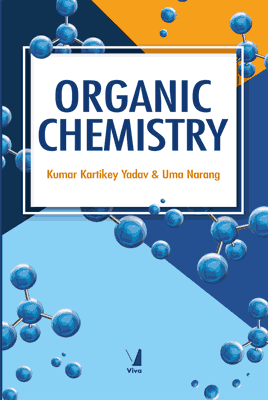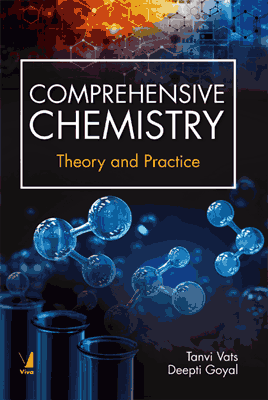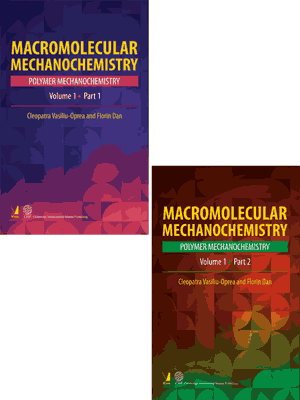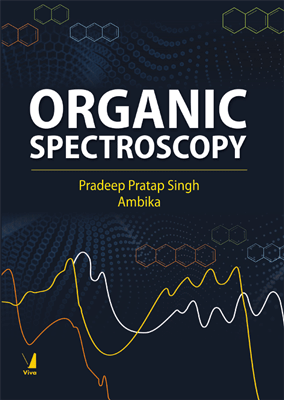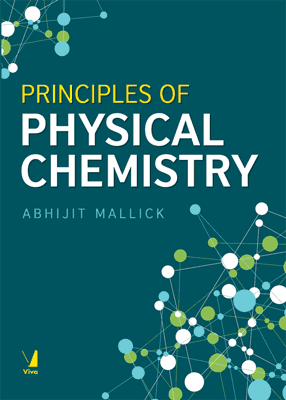Principles of Inorganic Chemistry, 3/e
Principles of Inorganic Chemistry, 3/e
₹715.50 ₹795.00 Save: ₹79.50 (10%)
Go to cartISBN: 9789387692985
Bind: Paperback
Year: 2018
Pages: 1000
Size: 159 x 242 mm
Publisher: Viva Books Originals
Sales Territory: Worldwide
This book has been recommended in Delhi University as as essential reading.
Click Here for the syllabus.
Description:
In designing this text, our aim has been to provide a comprehensive description of modern inorganic chemistry in a single volume. We have endeavored to address the concepts related to virtually all the segments of chemical elements and their compounds in a clear and systematic manner. The chemistry of inorganic materials is discussed with special reference to periodicity, structure, bonding, reactivity and bio-chemical characteristics. Box Items and Case Studies have been incorporated extensively to relate the principles governing inorganic chemistry with social, economic and historical issues.
The basic structure of the present text is a natural progression from its earlier editions. Several new topics, including black-body radiation, experimental evidence for electron spin, normalized and orthogonal wave functions, crystal radii, Sanderson electronegativity scale, formal charge, theories of hydrogen bonding, detection of radioactive radiations, corrosion and organometallic catalysts find a place in this edition. Industrially important compounds like silicates, silicones and phosphazenes have been brought in the ambit of a new chapter, ?Inorganic Polymers?. Another new chapter, “Quantitative Analysis” presents a schematic procedure for deduction of ions in inorganic substances. The chemistry of zinc, cadmium and mercury has been dealt with in yet another new chapter, “Group 12 Elements”. The information has been disseminated in an easy-to-learn format.
Target Audience:
This book is intended for students and academicians of Chemistry.
Contents:
Preface to the Third Edition
Preface to the Second Edition
Preface to the First Edition
Abbreviations
Chapter 1: Atomic Structure • Introduction • The Electron • The Proton • The Neutron • The Nucleus • Rutherford Model of Atom • Quantitative aspects of gold leaf experiment • Electromagnetic Radiation • Wave Nature of Light • Particle Nature of Light • Proofs of particle nature of light • Photoelectric effect • Compton effect • Electromagnetic Spectrum • Atomic Spectrum • Failure of Rutherford Model • Bohr Model of Atom • Bohr's picture of hydrogen atom • Bohr's explanation for hydrogen spectrum • Failure of Bohr model • Particle Nature of Electron • Wave Nature of Electron • de Broglie Principle • Heisenberg Uncertainty Principle • Schr”dinger Wave Equation • Quantum Numbers • Principal quantum number • Azimuthal quantum number • Magnetic quantum number • Spin quantum number • Experimental evidence for electron spin • Transformation of Coordinates • Signifi cance of Wave Function • Signifi cance of Probability Concept • Principles of Inorganic Chemistry • Normalized and Orthogonal Wave Functions • Pauli Exclusion Principle • Hund's Rule of Maximum Multiplicity • Aufbau Principle • Term Symbols
Chapter 2: Periodic Table • Introduction • The Classification • s-Block elements • Representative elements • Transition elements • Inner transition elements • Size of Elements • Atomic radii • Ionic radii • Crystal radii • Ionization Energy • Electron Affi nity • Electronegativity • Variation of electronegativity • Electronegativity scales • Pauling scale • Mulliken scale • Allred”Rochow scale • Jaff”“ scale • Sanderson scale • Slater Rules • Relativistic Effect • Nomenclature of Elements with Atomic Numbers • Greater than 100
Chapter 3: Chemical Bonding • Introduction • Ionic Bond • Lattice energy • Born”Haber cycle • The Kapustinskii equation • Degree of ionic character • Fajans” rules • Stoichiometric defects in ionic crystals • Schottky defects • Frenkel defects • Consequences of stoichiometric defects • Non-stoichiometric defects in ionic crystals • Metal excess due to anion vacancies • Metal excess due to interstitial cations • Metal deficiency due to cation vacancies • Metal deficiency due to interstitial anions • Consequences of non-stoichiometric defects • Radius ratio concept • Coordination number 3 (plane triangle) • Coordination number 4 (tetrahedral) • Coordination number 6 (octahedral) • Coordination number 8 (cubic) • Limitations of radius ratio concept • Covalent Bond • Valence bond theory • Hybridization • Valence shell electron pair repulsion theory • Molecular orbital theory • Linear combination of atomic orbitals • Polar covalent bonds • Dipole moment • Resonance • Bond length • Bond angle • Formal charge • Metallic Bond • Theories of Bonding in Metals • Sea of electrons theory • Band theory • Alloys • Hydrogen Bond • Factors affecting hydrogen bonding • Properties affected by hydrogen bonding • Types of hydrogen bonding • Anomalous character of water • Theories of hydrogen bonding • van der Waals Forces • Dipole”dipole attractions • Ion-dipole attractions • Ion-induced dipole attractions • London forces • Repulsive interactions
Chapter 4: Nuclear Chemistry • Introduction • The Atomic Nucleus • Binding energy of the nucleus • Packing fraction of the nucleus • Meson theory of nuclear forces • Characteristics of nuclear forces • Shell model of the nucleus • Liquid drop model of the nucleus • Natural Radioactivity • Disintegration theory • Rate of disintegration • Radioactive equilibrium • Radioactive disintegration series • Detection of radiation • Induced nuclear reactions • Artificial Radioactivity • Projectile-capture reactions • Projectile-capture particle-emission reactions • Spallation reactions • Nuclear fission • Nuclear fusion • Identification of Isotopes • Separation of Isotopes • Gaseous diffusion method • Centrifugal method • Applications of Radioactivity • Carbon dating • Age of earth and minerals • Power generation • Chemical investigations • Agricultural applications • Clinical applications • Biological applications • Industrial applications • Analytical applications • Airport security • Preservation of food products • Preservation of artifacts • Detection of forged paintings • Smoke detectors
Chapter 5: Acids and Bases • Introduction • Bronsted”Lowry Theory • Binary acids • Oxyacids • Hydrated cation acids • Bases • Leveling and differentiating effects • Lewis Theory • Acids • Bases • Hard and Soft Acid Base Theory
Chapter 6: Non-Aqueous Solvents • Introduction • Acid”Base Reactions • Precipitation Reactions • Complexation Reactions • Redox Reactions • Solvolysis Reactions
Chapter 7: Metallurgy • Introduction • Correlation Between Type of Ore and Standard Electrode Potential of Metal • Overview of Isolation Operation • Concentration of One • Hydraulic washing • Magnetic separation • Froth flotation • Leaching • Conversion of Ore into Oxide • Calcination • Roasting • Reduction of Treated Ore to Crude Metal • Smelting • Reduction with hydrogen • Air reduction process • Alumino”thermite Process • Bessemerization • Reduction by electrolysis • Purification of Metal • Liquation • Distillation • Selective oxidation • Selective dissolution • Hydrometallurgy • Vapor phase refining • Mond process • van Arkel process • Zone refining • Electrolytic refining • Parting • Thermodynamics of Metallurgical Processes
Chapter 8: Redox Reactions • Introduction • Half Reactions • Standard Electrode Potential • Electromotive Force • Redox Reactions and Color • Redox Reactions and Removal of Tarnish • Latimer Diagrams • Composing the half reactions for conversion • of one species into another • Stability of oxidation states • Ebsworth-Frost Diagrams • Construction of Ebsworth-Frost diagrams • Applications of Ebsworth-Frost diagrams • Corrosion
Chapter 9: Bioinorganic Chemistry • Introduction • Geochemical Effects on the Distribution of Elements • Zonal structure of the earth • Differentiation of elements • Chemical Elements Essential to Life Processes • Bulk elements • Macro elements • Trace elements • Ultratrace elements • Structure of the Cell • The cell membrane • The cytoplasm • The nucleus • Bioenergetics • Enzymes • Classification of Metallobiomolecules • Zinc-Based Enzymes • Carbonic anhydrase • Carboxypeptidase • Sodium-Potassium Pump • The Biochemistry of Iron • Ferritin • Transferrin • Hemoglobin • Myoglobin • The Biochemistry of Calcium • Role of calcium in development of bone and teeth • Role of calcium in transmission of nerve impulse • Role of calcium in muscle contraction • Role of calcium in clotting of blood • Cobalamine • Photosynthesis • The light reaction • The dark reaction • Toxicity of metal ions • Mercury • Lead • Arsenic • Cadmium • Metal-Based Pharmaceuticals • Cisplatin • Auranofin • Lithium carbonate • Gadoteric acid • Technetium 99-m exametazine
Chapter 10: Inorganic Polymers • Introduction • Type of Inorganic Polymers • Classification on basis of composition of backbone • Homopolymers • Heteropolymers • Classification on basis of spatial structure • Properties of Inorganic Polymers • Comparison of Inorganic Polymers with Organic Polymers • Typical Examples • Borazines • Silicates • Orthosilicates • Pyrosilicates • Cyclic silicates • Chain silicates • Sheet silicates • Three-dimensional silicates • Silicones • Uses of silicones • Phosphazenes • Polysulfates
Chapter 11: Hydrogen and Hydrides • Introduction • Position in the Periodic Table • Preparation of Hydrogen • Properties of Hydrogen • Isotopes of Hydrogen • ortho- and para-hydrogen • Atomic Hydrogen • Hydrogen Economy • Hydrides • Ionic or salt hydrides • Covalent or molecular hydrides • Metallic or interstitial hydrides • Intermediate hydrides
Chapter 12: Group 1 Elements • Introduction • Physical Properties • Flame coloration • Electrical conductivity • Electrode potential • Mutual miscibility • Chemical Properties • Reaction with water • Reaction with air • Reaction with nitrogen • Compounds • Sodium hydroxide • Sodium carbonate and sodium bicarbonate • Sodium oxide and sodium peroxide • Sodium nitrite and sodium nitrate • Sodium thiosulfate • Complexes • Anomalous Properties of Lithium • Diagonal Relationship Between Lithium and Magnesium
Chapter 13: Group 2 Elements • Introduction • Physical Properties • Ionization energy • Heat of hydration • Flame coloration • Chemical Properties • Reaction with water • Reaction with air • Reaction with acids and alkalis • Compounds • Beryllium(II) chloride • Beryllium(II) hydride • Basic beryllium acetate • Basic beryllium nitrate • Calcium sulfate • Calcium carbonate • Complexes
Chapter 14: Group 12 Elements • Introduction • Physical Properties • Metallic character • Oxidation states • Chemical Properties • Reaction with air • Reaction with acids • Reaction with alkalis • Reaction with halogens • Compounds • Polycations of mercury • Organometallic compounds
Chapter 15: Group 13 Elements • Introduction • Physical Properties • Melting points and boiling points • Inert pair effect • Chemical Properties • Reaction with air • Reaction with halogens • Reaction with acids • Reaction with alkalis • Compounds • Orthoboric acid • Diborane • Borax • Borides • Carboranes • Complexes
Chapter 16: Group 14 Elements • Introduction • Physical Properties • Catenation • Allotropic forms of carbon • Allotropic forms of tin • Chemical Properties • Reaction with air • Reaction with halogens • Reaction with acids • Reaction with alkalis • Compounds • Carbides • Ionic carbides • Covalent carbides • Interstitial carbides • Graphite intercalation compounds • Fullerenes • Cyanogen
Chapter 17: Group 15 Elements • Introduction • Physical Properties • Bond strength • Allotropic forms of phosphorus • White phosphorus • Red phosphorus • Black phosphorus • Chemical Properties • Reaction with air • Reaction with halogens • Reaction with sulfur • Reaction with metals • Compounds • Oxides of nitrogen • Oxyacids of nitrogen • Hyponitrous acid • Nitrous acid • Nitric acid • Hydrazine • Hydroxylamine • Nitrogen fluorides • Hydrogen azide • Nitrides • Phosphine • Oxyacids of phosphorus • Phosphorus acid series • Phosphoric acid series
Chapter 18: Group 16 Elements • Introduction • Physical Properties • Catenation • Allotropic forms of sulfur • Chemical Properties • Reaction with air • Reaction with hydrogen • Reaction with halogens • Reaction with metals • Reaction with nitric acid • Compounds • Oxides • Ozone • Water • Hydrogen peroxide • Oxygen fluorides • Sulfur nitrides • Oxyacids of sulfur • Peroxoacids of sulfur • Sulfur oxyhalides
Chapter 19: Group 17 Elements • Introduction • Physical Properties • Color • Bond energy • Chemical Properties • Reaction with water • Reaction with sodium hydroxide • Reaction with hydrogen sulfide • Reaction with ammonia • Reaction with carbon monoxide • Compounds • Interhalogen compounds • Polyhalides • Pseudohalogens and pseudohalides • Halogen cations • Oxyacids of chlorine • Chlorine dioxide • Hypofluorous acid
Chapter 20: Group 18 Elements • Introduction • Physical Properties • Liquid helium • Clathrates • Helium”neon laser • Chemical Properties • Reaction with platinum(VI) fluoride • Reaction with fluorine • Compounds • Xenon fluorides • Xenon oxides • Xenon oxofluorides • xxii Principles of Inorganic Chemistry
Chapter 21: The Transition Elements • Introduction • Physical Characteristics • Electronic Confi guration • Variable Oxidation States • Color • Catalytic Properties • Magnetic Properties • Magnetic moment • Magnetic susceptibility • Experimental determination of magnetic moment • Other forms of magnetism • Complexation • Small size of the metal ion • High charge on the metal ion • Presence of vacant d orbitals on the metal ion • Types of ligands • Comparison of 3d Transition Series with 4d/5d Series • Size • Oxidation states • Magnetic properties • Metal”metal bonding • Coordination number of complexes • Abundance • Relativistic Effect and Anomalous Characteristics of Heavier Transition Elements
Chapter 22: Werner Coordination Theory • Introduction • Postulate 1 • Postulate 2 • Postulate 3 • Postulate 4
Chapter 23: Nomenclature of Complexes • Introduction • IUPAC Rules • Representative Examples • Complexes with neutral coordination sphere • Complexes with cationic coordination sphere • Complexes with anionic coordination sphere • Complexes with cationic and anionic • coordination spheres • Complexes with bridging ligands • Dinuclear complexes
Chapter 24: Isomerism in Complexes • Introduction • Structural Isomers • Ionization isomers • Hydrate isomers • Linkage isomers • Coordination isomers • Coordination position isomers • Ligand isomers • Polymerization isomers • Stereoisomers • Geometrical isomers • Coordination number 4: square planar complexes • Coordination number 6: octahedral complexes • Optical isomers • Coordination number 4: tetrahedral complexes • Coordination number 6: octahedral complexes • Bailar Method of Isomeric Enumeration
Chapter 25: Stability of Complexes • Introduction • Criteria to Gauge Lability • Criteria to Gauge Stability • Chelate effect • Nature of metal ions and the ligands • Formation constants of complexes • Dissociation constants of complexes • Effective atomic number rule • Sixteen electron rule
Chapter 26: Theories of Metal”Ligand Bonding • Introduction • Valence Bond Theory • Coordination number 6 • Coordination number 4 • Merits of valence bond theory • Demerits of valence bond theory • Crystal Field Theory • Octahedral complexes • Crystal field stabilization energy • Tetrahedral complexes • Square planar complexes • Applications of crystal field theory • Magnetic properties • Hydrated radius • Enthalpies of hydration • Color • The glitter of gemstones • Structure of spinels • Reaction mechanisms • Drawbacks of crystal field theory • Classification of ligands • Nephelauxetic effect • Anti-ferromagnetic coupling • Electron spin resonance spectrum • Visible spectrum • Intensities of d”d transitions • Jahn”Teller Theorem • Molecular Orbital Theory • Octahedral complexes with no p-bonding • Octahedral complexes with p-bonding • Comparison of Crystal Field and Molecular Orbital Theories
Chapter 27: Chemistry of 3d Series Transition Elements • Introduction • Scandium • Titanium • Oxidation state IV • Oxidation state III • Oxidation state II • Vanadium • Oxidation state V • Oxidation state IV • Oxidation state III • Oxidation state II • Chromium • Oxidation state VI • Oxidation state V • Oxidation state IV • Oxidation state III • Oxidation state II • Manganese • Oxidation state VII • Oxidation state VI • Oxidation state V • Oxidation state IV • Oxidation state III • Oxidation state II • Iron • Oxidation state VI • Oxidation state IV • Oxidation state III • Oxidation state II • Cobalt • Oxidation state IV • Oxidation state III • Oxidation state II • Nickel • Oxidation state IV • Oxidation state III • Oxidation state II • Copper • Oxidation state III • Oxidation state II • Oxidation state I
Chapter 28: Kinetic Aspects of Complexes • Introduction • Mechanisms of Substitution Reactions • Substitution nucleophilic unimolecular reactions • Substitution nucleophilic bimolecular reactions • Factors Complicating Substitution Reactions • Factors Affecting Rates of Substitution Reactions • The trans Effect • Applications of trans effect • Synthesis of geometrical isomers • Distinction between geometrical isomers • Theories of trans effect • Polarization theory • p-Bonding theory • Redox Reactions • Outer sphere mechanism • Inner sphere mechanism • Complementary reactions • Non-complementary reactions
Chapter 29: Organometallic Compounds • Introduction • Classification of Organometallic Compounds • Ionic organometallics • s-Bonded organometallics • Multicentered-bonded organometallics • p-Bonded organometallics • Hapticity of Organometallic Compounds • Carbonyl Organometallics • Carbonyl complexes • Structures • Bonding • Infrared spectroscopy of carbonyl complexes • Synthesis • Reactions • Pentacarbonyliron(0) • Carbonylate anion complexes • Synthesis • Reactions • Olefin Organometallics • Structure • Bonding • Synthesis • Reactions • Alkyl Organometallics • Methyllithium(I) • Structure • Bonding • Synthesis • Reactions • Dimethylberyllium(II) • Structure • Bonding • Synthesis • Reactions • Trimethylaluminium(III) • Structure • Bonding • Synthesis • Reactions • Cyclopentadienyl Organometallics • Ferrocene • Structure • Bonding • Synthesis • Reactions • Nitrosyl Organometallics • Structures • Bonding • Synthesis • Reactions • Organometallic Catalysts • Wacker process • Alkene hydrogenation by Wilkinson catalyst • Hydroformylation process • Production of synthesis gas • Alkene polymerization by Ziegler-Natta catalyst • Fischer-Tropsch process
Chapter 30: The Lanthanoids • Introduction • General Characteristics • Electronic Confi guration • Oxidation States • Lanthanoid Contraction • Consequences of lanthanoid contraction • Complexes • Color • Magnetic Properties • Spectral Properties • Separation of Lanthanoids • Precipitation • Fractional crystallization • Thermal decomposition • Solvent extraction • Ion exchange
Chapter 31: The Actinoids • Introduction • General Properties • Electronic Confi guration • Oxidation States • Compounds • Thorium(IV) nitrate • Uranium(III) hydride • Uranium oxides • Actinoid Contraction • Magnetic Properties • Electronic Spectra • Complexes
Chapter 32: Qualitative Analysis • Introduction • Experimental Techniques • Analysis of Anions • Preliminary tests • Conformatory tests • Combination tests • Analysis of Cations • Borax bead test • Microcosmic bead test • Sodium carbonate bead test • Charcoal cavity test • Ash test • Flame test • Schematic analysis of cations • Group zero cation • Group I cations • Group II cations • Group IIA cations • Group IIB cations • Removal of interfering anions • Group III cations • Group IV cations • Group V cations • Group VI cations • Spot tests • Analysis of Insoluble Compounds
Appendix • Units and their symbols • Symbols and values of physical constants
Suggested Reading
Index
About the Author:
Dr. G.S. Sodhi earned his doctorate from the University of Delhi. At present, he is Associate Professor, Department of Chemistry and Coordinator, Forensic Science Unit at S.G.T.B. Khalsa College, Delhi University. He has published 150 research papers and filed 10 Indian patents. He was a Visiting Fellow, National Crime Records Bureau, Ministry of Home Affairs, in 1996-97. He has received the Union Home Minister Award, National Technology Day Award, World Intellectual Property Organization's International Award, Lockheed Martin India Innovation Growth Programme Award and India Innovation Initiative Award for innovative work in forensic chemistry. His research interests include “Identification of Weapon Holders in Crime Cases” and “Detection of Fingerprints at Crime Scenes”. He has organized training courses in Crime Scene Management for students, teachers, police officers and army personnel. He is a Fellow, the Chartered Society of Forensic Sciences, UK.
